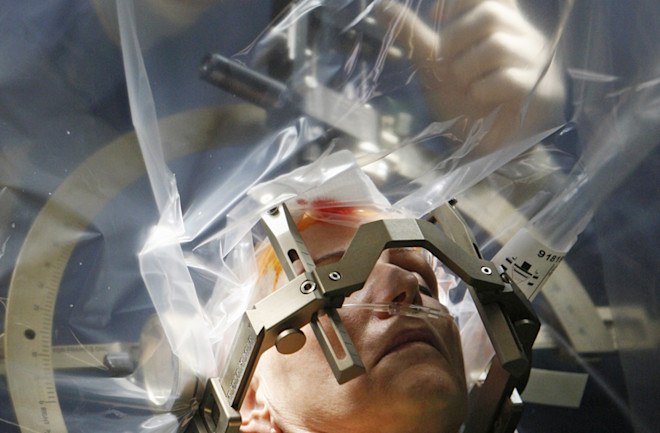On a cold Tuesday morning one March, Christian Lüscher hopped on his bicycle in the cavernous basement tunnels that snake beneath the building housing his laboratory and pedaled to the nearby Geneva University Hospitals.
By the time he arrived in the operating room, a surgical team already had shaved a patient bald, secured a metal frame to her head and drilled two quarter-size holes on either side of her skull. She was 68, a retired U.N. employee.
Lüscher spotted her tremors immediately. From her fingers to her feet, the patient’s whole right side shook four or five times a second as neurons deep in her brain fired spontaneously, sending electrical impulses toward her motor cortex and down her spine, and causing her muscles to contract involuntarily.
Lüscher, a neurologist who has spent years treating Parkinson’s disease, was intimately familiar with her condition. Yet, as the now 52-year-old scientist watched a neurosurgeon and his team prepare to use a technique called deep brain stimulation (DBS), a very different kind of patient was never far from his mind.

